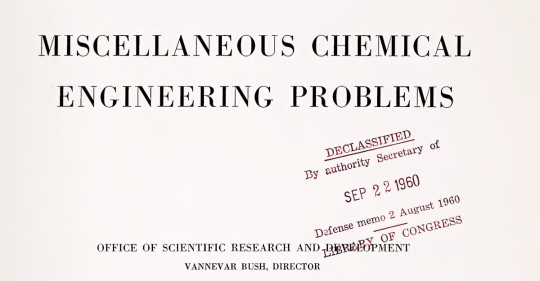#it and telecom
Explore tagged Tumblr posts
Text
Unveiling the Future of Managed Mobility Services: Market Trends, Growth Factors, and Key Players

Unveiling the Future of Managed Mobility Services: Market Trends, Growth Factors, and Key Players
The global Managed Mobility Services (MMS) Market is on a remarkable growth trajectory, with Straits Research reporting a market size valued at USD 22.53 billion in 2022. This market is projected to expand significantly, reaching an estimated USD 270.49 billion by 2031, and registering an impressive CAGR of 31.8% during the forecast period from 2023 to 2031. This rapid growth is driven by the increasing complexity of mobile device management in enterprises and the rising adoption of Bring Your Own Device (BYOD) policies.
Definition of Managed Mobility Services
Managed Mobility Services encompass a range of solutions that allow organizations to efficiently manage mobile devices, applications, and security. These services help streamline operations by outsourcing the management of mobile technology to specialized service providers. MMS includes functions such as mobile device management (MDM), mobile application management (MAM), and mobile security, facilitating seamless connectivity for employees working remotely or in hybrid environments.
Request a Free Sample (Free Executive Summary at Full Report Starting from USD 1850): https://straitsresearch.com/report/managed-mobility-service-market/request-sample
Latest Trends in Managed Mobility Services
Rise of BYOD Policies: More companies are adopting BYOD strategies, allowing employees to use their personal devices for work purposes. This trend increases the demand for managed mobility services that can secure and manage these devices effectively.
Cloud-Based Solutions: The shift towards cloud computing has led to an increase in demand for cloud-based managed mobility services, providing flexibility and scalability for businesses.
Increased Focus on Security: With the rise in cyber threats, organizations are prioritizing security measures within their mobility strategies, driving demand for comprehensive mobile security solutions.
Integration of AI and Automation: The incorporation of artificial intelligence and automation in managed mobility services enhances efficiency by streamlining processes such as device provisioning and application management.
Growing Mobile Workforce: The ongoing trend towards remote work has necessitated robust managed mobility services to support employees outside traditional office environments.Market Segmentation with Insights-Driven Strategy Guide: https://straitsresearch.com/report/managed-mobility-service-market/segmentation
Market Segmentation
The Managed Mobility Services Market can be segmented based on various criteria:
By Function
Mobile Device Management (MDM): Focuses on managing and securing mobile devices within an organization.
Mobile Application Management (MAM): Involves managing applications on mobile devices to ensure security and compliance.
Mobile Security: Encompasses solutions designed to protect mobile devices from threats.
Other Functions: Includes additional services that support mobility management.
By Deployment
Cloud: Services hosted on cloud platforms offering scalability and flexibility.
On-Premise: Solutions deployed within the organization’s infrastructure for greater control.
By End-user Industry
IT and Telecom
Banking, Financial Services, and Insurance (BFSI)
Healthcare
Manufacturing
Retail
Education
Other End-user Industries
Growth Factors
The growth of the Managed Mobility Services Market is fueled by several key factors:
Increased Adoption of Mobile Devices: As businesses increasingly rely on mobile technology for operations, the need for effective management solutions grows.
Rising Cybersecurity Concerns: Organizations are investing in managed mobility services to mitigate risks associated with data breaches and cyber threats.
Demand for Integrated Solutions: Companies are seeking comprehensive managed mobility solutions that integrate various functions into a single platform.
Opportunities
Opportunities abound in the Managed Mobility Services Market:
Expansion in Emerging Markets: Regions with growing digital infrastructure present opportunities for service providers to expand their offerings.
Development of Advanced Security Solutions: There is a growing need for innovative security solutions tailored to meet the challenges posed by a mobile workforce.
Partnerships and Collaborations: Strategic partnerships between technology providers can enhance service offerings and improve market reach.
Key Players in the Managed Mobility Services Market
Several prominent companies are leading the Managed Mobility Services Market:
Hewlett-Packard
Vodafone Group PLC
Microsoft Corporation
Tech Mahindra
AT&T Inc.
Fujitsu Ltd
Kyndryl (IBM Corporation)
Wipro Ltd
Orange SA
Telefónica SA
Samsung Electronics Co. Ltd.
These key players are leveraging their expertise to innovate and provide comprehensive managed mobility solutions that cater to diverse industry needs.
Buy Full Report (Exclusive Insights): https://straitsresearch.com/buy-now/managed-mobility-service-market
Research Methodology
Straits Research employs a rigorous methodology combining top-down and bottom-up approaches. Data triangulation ensures accuracy in estimating market size and forecasts. Extensive primary research with industry stakeholders further validates market figures and trends.
About Straits Research
Straits Research is a global provider of high-quality market research, analytics, and advisory services. With a dedicated team of expert analysts, we deliver actionable data and insights to support informed business decisions. Our customized approach allows us to cater to each client’s specific needs, ensuring the most relevant and valuable market intelligence.
Table of Contents for the Managed Mobility Services Market Report: https://straitsresearch.com/report/managed-mobility-service-market/toc
Contact Us:
Email: [email protected]
Address: 825 3rd Avenue, New York, NY, USA, 10022
Phone: +1 646 905 0080 (U.S.), +91 8087085354 (India), +44 203 695 0070 (U.K.)
#Managed Mobility Services#MMS Market#Mobile Device Management#Mobile Application Management#Cybersecurity#Cloud Solutions#BYOD Policies#IT and Telecom#Market Analysis#Straits Research#Business Growth Trends
0 notes
Text
United States voice biometrics market size is projected to exhibit a growth rate (CAGR) of 16.85% during 2024-2032. The increasing focus on security and the need for robust authentication methods, the rising demand in financial services, the rapid technological advancements in artificial intelligence (AI) and machine learning (ML), and the shift towards multi-factor authentication (MFA) are some of the factors propelling the market.
#United States Voice Biometrics Market Report by Component (Solutions#Services)#Type (Active Voice Biometrics#Passive Voice Biometrics)#Deployment Mode (On-Premises#Cloud-Based)#Organization Size (Large Enterprises#Small and Medium-sized Enterprises (SMEs))#Application (Authentication and Customer Verification#Forensic Voice Analysis and Criminal Investigation#Fraud Detection and Prevention#Risk and Emergency Management#Transaction Processing#Access Control#Workforce Management#and Others)#Vertical (BFSI#Retail and E-Commerce#Government and Defense#IT and Telecom#Healthcare and Life Sciences#Transportation and Logistics#Travel and Hospitality#Energy and Utilities#and Region 2024-2032
1 note
·
View note
Text
Global Data Center Market to Hit $622.4B by 2030, Led by IT & Telecom Advances
According to the latest market research study published by P&S Intelligence, the global data center market is on a growth trajectory, projected to reach USD 622.4 billion by 2030. A key trend in the industry is the push toward carbon-neutral data centers by the decade’s end, with companies implementing strategies to meet this objective. According to the IEA, the U.K. aims to reduce greenhouse…

View On WordPress
0 notes
Text
Gamification Market Boom in Near Future!
According to a new report published by Allied Market Research, titled, “Gamification Market, by Component (Solution, Service), by Deployment Model (On Premise, Cloud), by Enterprise Size (Large Enterprises, SMEs), by Application (Marketing, Sales, Support, Product Development, Human Resource, Others), by Industry Vertical (Retail, Education, IT and telecom, BFSI, Manufacturing, Media and Entertainment, Others): Global Opportunity Analysis and Industry Forecast, 2020–2030”.
The gamification market was valued at $9.9 billion in 2020, and is estimated to reach $95.5 billion by 2030, growing at a CAGR of 25.6% from 2021 to 2030.

Gamification is the application of game elements and digital game design techniques for non-game problems, such as business and social impact challenges. Gamification leverages natural tendencies of people for competition, achievement, collaboration, and charity. Tools employed in game design, such as rewarding users for achievements, “leveling-up,” and earning badges are carried into the real world to help motivate individuals to achieve their goals or boost performance. Furthermore, the key factor that drives the market includes rewards and recognition to employees over performance to boost the employee engagement and providing lucrative offers to the customers and consumers boost the growth of the gamification market. In addition, gamification yields higher ROI positively impacts the growth of the market. However, complexities in developing gamification application and short lifecycle of gamification hinders the market growth. On the contrary, adoption of AI for processing and showing personalized results is expected to offer remunerative opportunities for expansion of the gamification market during the forecast period.
Depending on enterprise size, the large enterprises segment holds the largest gamification market share, owing to the luxury to invest and focus toward gamification at a higher level compared to small & mid-size organizations. Every industry has around 10–15 large-scale vendors who dominate the market and have a greater number of loyal customers compared to small vendors. However, the SMEs segment is expected to witness growth at the highest rate during the forecast period, owing to the fact that the gamification market in mid-size & small organizations is gaining momentum as it allows SMEs to manage various facilities, including space, assets, staff, and processes in a minimum time and energy which benefit organizations at a greater level.
Region wise, the gamification market size was dominated by North America in 2020, owing to increase in adoption of gamification in healthcare and rise in number of technology launches. In addition, gamification is primarily useful for behavioral changes, incentivizing people to increase their wellness by performing game-like tasks and receiving rewards. However, Asia-Pacific is expected to witness significant growth during the forecast period, owing to increase in awareness related to significant advantage of gamification among developing nations.
Inquiry Before Buying: https://www.alliedmarketresearch.com/purchase-enquiry/245
According to gamification market analysis COVID-19 pandemic had an impact on almost every industrial sector and the global economy. Thousands of enterprises claimed bankruptcy overnight, owing to the lockdown around March and April in 2020. Without people going out physically and spending money on shops, big retail stores struggle to afford the cost of maintaining physical assets and staff, while more than 40 million people recently got laid off. As a result, consumers are more hesitant to spend their money. COVID-19 has given businesses an even greater reason to transform their business digitally. Companies that have been able to anticipate these new sets of challenges can survive and even grow, with increasing digital transformation. The digital transformation has also created new opportunities to improve online experience and explore elements of gamification and new media. Furthermore, gamification that could be easy to implement for smaller businesses such as live polls, video games, rewarding users for liking, commenting on content drive the adoption of gamification among businesses.
KEY FINDINGS OF THE STUDY
By component, solution segment accounted for the largest gamification market share in 2020.
By region, North America generated highest revenue in 2020.
By enterprise size, large enterprise segment generated the highest revenue in 2020.
The key players that operate in the gamification market forecast are Ambition, Axonify Inc., Bunchball Inc., callidus Software Inc., Cognizant Technology Solution Corp, Cut-e GmbH, G-Cube, Iactionable Inc, Microsoft Corporation, and MPS Interactive Systems Limited. These players have adopted various strategies to increase their market penetration and strengthen their position in the gamification industry.
About Us:
Allied Market Research (AMR) is a full-service market research and business-consulting wing of Allied Analytics LLP based in Portland, Oregon. Allied Market Research provides global enterprises as well as medium and small businesses with unmatched quality of “Market Research Reports Insights” and “Business Intelligence Solutions.” AMR has a targeted view to provide business insights and consulting to assist its clients to make strategic business decisions and achieve sustainable growth in their respective market domain.
Contact Us:
David Correa 1209 Orange Street Corporation Trust Center Wilmington New Castle Delaware 19801 USA Int’l: +1–503–894–6022 Toll Free: +1–800–792–5285 Fax: +1–800–792–5285 [email protected]
0 notes
Text

The first mobile phone call was made on this day in 1973. Martin Cooper, using a prototype of the Motorola DynaTAC, placed a call from the streets of New York to Bell Labs in New Jersey. The device was 9 inches tall, had a talk-time of 35 minutes, and took 10 hours to recharge.
6K notes
·
View notes
Text








Compilation of pictures of these Angelic Beasts that ive taken in case someone cares
#i do like to take photos#ive never posted them here though#photography#telecommunications#cell tower#cell towers#telecom tower#my art
294 notes
·
View notes
Text
Doublethink sump linkdump

On OCTOBER 23 at 7PM, I'll be in DECATUR, presenting my novel THE BEZZLE at EAGLE EYE BOOKS.

Trigger warning for #eikositriophobia: this is my 23d linkdump (Hail Discordia!), an erratic Saturday purge of the open tabs I haven't managed to blog this week; here's the previous 22:
https://pluralistic.net/tag/linkdump/
When I was a kid, I idolized Harlan Ellison. I loved his prose styling, his stage presence, the way he blended activism and fiction, and the way he mixed critical nonfiction with fiction. As a 17 year old, I attended a writing workshop that Ann Crispin was giving at a local science fiction convention and she told me that I had the makings of a great writer, just as soon as I stopped trying to be Harlan Ellison.
But Harlan was a complicated figure. I attended the Clarion Workshop in 1992 specifically because he was our instructor, and came away bitterly disillusioned after he targeted one of my fellow students for relentless, cruel bullying, a performance that was so ugly that the board fired the director and permanently barred him from teaching the workshop.
Later on, Harlan became the kind of copyright maximalist who called for arbitrary internet surveillance and censorship in the name of shutting down ebook piracy. During a panel about this at a sf convention, he called one of the other panelists a "motherfucker" and threatened to punch him in the face. He took to badmouthing me in interviews, painting my position – whose nuances he certainly understood – in crude caricature.
But Harlan and I had many friends in common, people I really liked, and they were adamant that Harlan's flaws were not the whole story: if Harlan liked you, he would do anything to stand up for you, no matter the cost to himself. Famously, when Harlan taught Octavia Butler's Clarion, he demanded to know why she wasn't writing full time, and she replied that there was the inconvenient matter of making rent and groceries. He replied, "If that's all that's stopping you, come live in my guest house for as long as it takes, eat my groceries, and write." Which she did.
Which is great, but also: one of my own Clarion students told me about when his then-teenaged mother met Harlan at a sf convention and told him that she dreamed of becoming a writer, and he propositioned her. She was so turned off that she stopped writing forever (her son, my student, is now an accomplished writer).
So Harlan was a mixed bag. He did very, very good things. He did very, very bad things. When Harlan died, in 2018, I wrote an obit where I grappled with these two facts:
https://memex.craphound.com/2018/06/28/rip-harlan-ellison/
In it, I proposed a way of thinking about people that tried to make sense of both Harlans – and of all the people in our lives. There's an unfortunate tendency to think of the people that matter to us as having their deeds recorded in a ledger, with good deeds in one column and wicked deeds down the other.
In this formulation, we add up the good deeds and the bad deeds and subtract the bad from the good. If the result is a positive number, we say the good outweighs the bad, and therefore the person is, on balance, good. On the other hand, if the bad outweighs the good, then the person is bad, and the good deeds are irrelevant.
This gets us into no end of trouble. It means that when someone we admire slips up, we give them a pass, because "they've earned it." And when someone who's hurt us does something selfless and kind and brave, we treat that as though it doesn't matter, because they're an asshole.
But the truth is, no amount of good deeds can wipe away the bad. If you hurt someone, the fact that you've helped someone else doesn't make that hurt any easier to bear. And the kindnesses you do for other people make their lives better, no matter what bad things you've done to others.
Rather than calculating the balance of our goodness or badness, I think we should just, you know, sit with our sins and virtues. Let all the harm and joy exist in a state of superposition. Don't cancel out the harm. Don't wave away the good. They both exist, neither cancels the other, and we should strive to help more, and to do less harm. We should do everything we can to help those we harm. No one owes us a pass because of the good we've done.
That's the lesson Harlan taught me, and he taught it to me by absolutely failing to live his life this way – a fact that exists alongside all of the good he did, including the great art he made, which I love, and which inspired me.
Not long after Harlan's death, I got a phone call from J Michael Straczynski, Harlan's literary executor. As part of his care for Harlan's literary legacy, Joe was editing a new anthology of short stories, The Last Dangerous Visions, and did I want to contribute a story?
https://www.rollingstone.com/culture/culture-features/harlan-ellison-last-dangerous-vision-1235117069/
Of course I did. Harlan edited Dangerous Visions in 1967: a groundbreaking anthology of uncomfortable science fiction that featured everyone from Philip K Dick to Samuel Delany. The followup, 1972's Again, Dangerous Visions, was, if anything, even more influential, including Le Guin's The Word For World IS Forest, as well as work by Joanna Russ, Kurt Vonnegut, David Gerrold, and James Tiptree, Jr.
Though some of the stories in these books haven't aged well, together, they completely changed my view of what science fiction was and what it could be. But The Last Dangerous Visions was a different (ahem) story. For complicated reasons (which all cashed out to "Harlan being very difficult to work with, sometimes for damned good reasons, other times for completely petty ones), TLDV was, at the time of Harlan's death, fifty years behind schedule. It was "science fiction's most famous unpublished book." Harlan had bought early work from writers who had gone on to have major careers – like Bruce Sterling – and had sat on them for half a century.
Then Joe called me to tell me that he was starting over with TLDV and did I want to contribute a story – and of course I did. I wrote a story for him with the title "Jeffty Is Five," part of my series of stories with the same titles as famous works of sf:
https://locusmag.com/2012/05/cory-doctorow-a-prose-by-any-other-name/
Joe liked the story, but not the title. He thought Harlan wouldn't have approved of this kind of appropriation, and he wanted to do right by the memory of his old friend. My first reaction was very Harlan-like: this is supposed to make you mad, it's my art, and if it offends you, that's your problem.
But I remembered the most important lesson I learned from Harlan, about good deeds and bad ones, and I thought about Joe, a writer I admired and liked, who was grappling with his grief and his commitment to Harlan's legacy, and I changed my mind and told him of course I'd change the title. I changed the title because Harlan would never have done so, and that's rather the point of the story.The story is (now)) called "The Weight of a Heart, the Weight of a Feather" (a very Harlanish title), and it's about the legacy of complicated people, whose lives are full of noble selflessness *and careless or deliberate cruelty. It's about throwing away the ledger and just letting all those facts sit together, about lives that are neither washed of sin by virtue, nor washed of virtue by sin.
It's a good story, I think, and I'm proud of it, and I'm interested in what the rest of you think now that the book is out:
https://www.blackstonepublishing.com/products/book-fyhm
Harlan was the writer who made me want to get good at reading my stories aloud. I was a charter member of the Harlan Ellison Record Club, as you can see for yourself from the time Harlan (accidentally) doxed me:
http://harlanellison.com/text/paladin.txt
After nearly 20 years of podcasting, I'm actually pretty good at this stuff. I'm going to be podcasting a reading of this story – eventually. I am nearly done "de-googling" my podcast feed, ripping it out of Feedburner, a service that I started using nearly two decades ago to convert a WordPress RSS feed to a podcast feed. In the intervening years, WordPress has come to support this natively and Feedburner has become a division of Google, so I've been methodically removing Feedburner's hooks from my feed, which is now proudly available here, without any surveillance or analytics:
https://craphound.com/feeds/doctorow_podcast
I'll be writing up the process eventually. In the meantime, I'm about to embark on another podcast fiction project, serializing my novella Spill, a "Little Brother" story that Tor's Reactor just published:
https://reactormag.com/spill-cory-doctorow/
The first part of "Spill" will go out tomorrow or Monday. Reactor also just published another "Little Brother" story, "Vigilant," which I read in last week's podcast:
https://craphound.com/littlebrother/2024/09/29/vigilant-a-little-brother-story/
One of my long-running beefs with Harlan was his insistence that the answer of copyright infringement online was to create an obligation on intermediaries – like ISPs – to censor their users' communications on demand from anyone claiming to have been wronged by a post or upload.
This would be bad for free expression under any circumstances, but it's an especially dangerous vision for ISPs, who are among the worst-run, most venal businesses in modern society ("We don't care, we don't have to, we're the phone company" -L Tomlin).
It's hard to overstate just how terrible ISPs are, but even in a field that includes Charter and Comcast, there's one company that rises above the pack when it comes to being grotesquely, imaginatively awful: Cox Communications.
Here's the latest from Cox: they sell "unlimited" gigabit data plans that cost $100 for the base plan and $50 to add the "unlimited" data. But – as Jon Brodkin writes for Ars Technica – Cox uniquely defines "unlimited" as severely limited:
https://arstechnica.com/tech-policy/2020/06/cox-slows-internet-speeds-in-entire-neighborhoods-to-punish-any-heavy-users/
Now, you're probably thinking, ho-hum, another company that offered unlimited service and then acted like dicks when a customer treated it as unlimited, ::laughs in American Airlines::
https://www.forbes.com/sites/jamesasquith/2019/11/13/unlimited-first-class-flights-for-lifehow-american-airlines-made-the-most-expensive-mistake-in-aviation-history/
But that's not the Cox story! Cox doesn't just throttle "unlimited" customers' internet to 2006-vintage DSL speeds – they slow down the entire neighborhood around the unlimited customer to those speeds.
As Brodkin writes, every Cox customer in the same neighborhood as an "unlimited" customer named "Mike" had their upload speeds reduced by more than two thirds, from 35mbps to 10mbps, to punish Mike. And they're not the only ones!
https://www.reddit.com/r/GNV/comments/gkicjg/comment/fr670cx/
Cox confirmed they were doing this, saying "performance can be improved for all customers in the neighborhood by temporarily increasing or maintaining download speeds and changing upload speeds for some of our service tiers."
Cox has been on a roll lately, really going for the shitty-telecoms-company gold. Back in August, 404 Media published a leaked pitch deck in which Cox promised advertisers that they were secretly listening to their customers' smart devices, transcribing their private conversations, and using them to target ads:
https://www.404media.co/heres-the-pitch-deck-for-active-listening-ad-targeting/
This isn't just appalling, it's also almost certainly fraudulent. As terrible as "smart" devices are (and oh God are they terrible), the vast majority of them don't do this. That's something a lot of security researchers have investigated, doing things like hooking up a protocol analyzer to a LAN with a smart device on it and looking for data transmissions that correspond to ambient speech in earshot of the gadget's mic.
My guess is that Cox has done a deal with a couple of the bottom-feedingest "smart TV" companies (as a cable operator, Cox will have relationships with a lot of these companies) to engage in this conduct. Smart TVs have emerged as one of the worst categories of consumer technology, on every axis: performance, privacy, repairability. The field has raced to the bottom, hit it, and then started digging to find new lows to sink to. This is just my hunch here, but I think it's highly likely that if there's a class of devices that are bugging your living room and selling the data to Cox, it's gonna be a smart TV (top tip: buy a computer monitor instead, and use your phone or laptop to stream to it).
Ask a certain kind of very smooth-brained, Samuelson-pilled economist about the enshittification of smart TVs and they'll tell you that this is a "revealed preference":
https://en.wikipedia.org/wiki/Revealed_preference
As in, sure, you may say that you don't want your TV to secretly record your private conversations and sell them to Cox, but actually you quite like it, because you have a TV.
While this is a facially very stupid argument, it's routinely made by people who think they're very smart, a point famously made by Matt Bors's "Mr Gotcha":
https://thenib.com/mister-gotcha/
Comics turn out to be a very good medium for stringing up the revealed preferences crowd on their own petards. This week, Juan Santapau's "The Secret Knots" added to the Mr Gotcha canon with an equally brilliant webcomic, albeit one with a very different vibe, entitled "Remind Me Later":
https://thesecretknots.com/comic/remind-me-later/
Santapau really catches the zeitgeist with this one, which is more of a slow burn than a zinger, and which shows how online "revealed preferences" nonsense grooms us for the same bullshit in every corner of our lives, even our psychotherapist's office. Highly recommended – an instant classic.
"Revealed preferences" comes from the Chicago School of Economics, a field that decided that a) economics should be a discipline grounded in mathematical models; and b) it was impossible to factor power relationships into these models; so c) power doesn't matter.
Once you understand this fact, everything else snaps into focus – like, why the Chicago School loves monopolies. If you model an economy dominated by monopolists without factoring the power that monopolists wield, then you can very easily assume that any monopoly you discover is the result of a lot of people voluntarily choosing to spend all their money with the company they love best.
The fact that we all hate the monopolists we have to deal with is dismissed by these economists as a mirage: "sure, you say you hate them, but you do business with them, therefore, your 'revealed preference' shows that you actually love them."
Which is how we end up with absolutely outrageous rackets like the scholarly publishing cartel. Scholarly journals acquire academics' work for free; get other academics to edit the work for free; acquire lifetime copyright to those finished works; and charge the institutions that paid those "volunteer" academics salaries millions of dollars to access their publications:
https://pluralistic.net/2024/08/16/the-public-sphere/#not-the-elsevier
These companies don't just lock up knowledge and tie an anchor around the scientists' and scholars' ankles, dragging them down. Their market power means that they can hurt their customers and users in every way, including through rampant privacy violations.
A new study from SPARC investigates the privacy practices of Springerlink, and finds them to be a cesspit of invasive, abusive conduct that would make even a Cox executive blush:
https://zenodo.org/records/13886473
Yes, on the one hand, this isn't surprising. If a company can screw you on pricing, why wouldn't they scruple to give you the shaft on privacy as well? But The fact that a company as terrible as Springer can be the dominant firm in the sector is still shocking, somehow.
But that's terminal-stage capitalism for you. It's not just that bad companies companies thrive – it's that being a bad company is a predictor of sky-high valuations and fawning coverage from the finance press.
Take Openai, a company that the press treats as a heptillion-dollar money-printer whose valuation will eventually exceed the rest of the known universe. Openai has a lot of problems – a mass exodus of key personnel, a product that doesn't work for nearly all the things it's claimed as a solution to – but the biggest one is that it's a bad business.
That's the theme of a fantastic, characteristically scathing-but-deep Ed Zitron article called (what else?) "Openai is a bad business":
https://www.wheresyoured.at/oai-business/
Zitron does something that no one else in the business press does: takes Openai's claims about its business fundamentals – its costs, its prices, its competitors, and even its capabilities – at face value, and then asks, "Even if this is all true, will Openai ever turn a profit?"
The answer is a pretty convincing "no." Zitron calls it a "subprime AI crisis" in a nod to Tim Hwang's must-read 2020 book about the ad-tech bezzle, Subprime Attention Crisis:
https://pluralistic.net/2020/12/06/surveillance-tulip-bulbs/#adtech-bubble
The fascinating thing about both Zitron and Hwang's analysis isn't that there are big companies that suck – it's that they are able to suck up so much money and credulous excitement, despite how badly they suck.
That's where power – the thing that neoliberal economists say doesn't matter – comes in. Monopoly power is a self-accelerating flywheel, as Amazon's famous investor pitch explains:
https://vimeo.com/739486256/00a0a7379a
Once a monopolist or a cartel wields market power, they can continue to dominate a sector, even though they're very bad – and even if they use their power to rip off both their customers and very powerful suppliers.
That's the lesson of Michael Jordan's lawsuit against NASCAR, as Matt Stoller explains in his latest BIG newsletter:
https://www.thebignewsletter.com/p/michael-jordan-anti-monopolist
Jordan is one of the most famous basketball players, but after retiring from the game, he became a NASCAR owner, and as such, has been embroiled in a monopoly whose abuses are both eerily familiar to anyone who pays attention to, say the pharmacy benefit manager racket:
https://pluralistic.net/2024/09/23/shield-of-boringness/#some-men-rob-you-with-a-fountain-pen
But on the other hand, the fact this is all happening to race-cars and not pharmacies makes it very weird indeed. As with, say, PBMs, NASCAR's monopoly isn't just victimizing the individuals who watch racing, but also the racecar teams. These teams are owned by rich, powerful people (like Jordan), but are "almost always on the verge of bankruptcy."
Why is that? NASCAR rips them off. For example, teams have to buy all their parts from NASCAR, at huge markups, and the purchase contract prohibits them from racing at any rival event. There are a million petty schemes like this, and NASCAR carefully titrates its bleed-off to leave its victims almost at death's door, but still (barely) solvent enough to keep racing.
NASCAR also bought out all the rival leagues, and most of the tracks, and then locked the remaining tracks to exclusivity deals. Then the teams all had to sign noncompetes as a condition of competing in NASCAR, the only game in town – forever.
Hence Michael Jordan, a person who steadfastly refused to involve himself in politics during his basketball career, becoming a firebreathing trustbuster. Stoller cites Jordan's transformation as reason to believe that the anti-monopoly agenda will survive even in the event that Harris wins but bows to corporate donors who insist on purging the Biden administration's trustbusters.
That's a hopeful note, and I'd add my own to it: the fact that the NASCAR scam is so similar to the pharma swindles, academic publishing swindles, and all the other monopoly rip-offs means that there is a potential class alliance between university professors, NASCAR owners, and people with chronic health conditions and big pharmaceutical bills.
That high note brings me to the end of this week's linkdump! And here's a little dessert in case you've got room for one more little link: Kitowares "Medieval Mules", a forthcoming clog styled as trompe l'oeil plate armor:
https://www.kitowares.la/
Pair with old favorites like lycra armor leggings:
https://loricaclothing.com/collections/leggings-1/products/the-augsburg-legging
And a DIY crotcheted knight's helmet:
https://www.etsy.com/listing/590854477/knights-helmet-w-detachable-visor

Tor Books as just published two new, free LITTLE BROTHER s tories: VIGILANT, about creepy surveillance in distance education; a nd SPILL, about oil pipelines and indigenous landback.


If you'd like an essay-formatted version of this post to read or share, here's a link to it on pluralistic.net, my surveillance-free, ad-free, tracker-free blog:
https://pluralistic.net/2024/10/05/farrago/#jeffty-is-five
#pluralistic#linkdump#linkdumps#open access#academic publishing#publishing#monopolies#springer#springer verlag#academia#libraries#glam#cox#collective punishment#ISP#telecoms#cox communications#openai#bubbles#bubblenomics#ed zitron#nascar#michael jordan#car racing#racing#shoes#fashion#medieval mules#harlan ellison#jms
176 notes
·
View notes
Text






A false calm was sweeping over the city. Everyone knew it wouldn't last, but they try to enjoy it as much as they can.
First // Prev // Next
#dreamwastaken#sapnap#badboyhalo#awesamdude#my art#dreamblr#white.dragon.au.art#white.dragon.au#do let me know if the dialogue is too small to read!#does this also count as#dtblr#technically yeah!#also the intercom = telecom#I meant to say telecom but im too tired to fix it.
186 notes
·
View notes
Text
A British telecom company has made a generative AI bot that takes calls from scammers while impersonating a baffled old grandmother that tells meandering stories and goes on weird tangents to waste the scammers' time while also recording everything to get information on their operations.
This is, in a word, awesome.
64 notes
·
View notes
Text

Chinatsu Kano
Official Art for ティーンエイジブルー (Teenage Blue) by Eve
#curators on tumblr#ao no hako#blue box#eve#teenage blue#ティーンエイジブルー#chinatsu kano#kano chinatsu#telecom animation film#manga#anime#anime manga#official art#anime daily#daily anime#manga daily#daily manga#animedaily#art#artwork#anime art#animanga#user.roy#userartless#userdabiluna#userkyaa#usermica#usermoh#userrashed#userroh
65 notes
·
View notes
Text

UK 1998
101 notes
·
View notes
Text
United States marketing automation market size reached USD 19.1 Billion in 2024. Looking forward, IMARC Group expects the market to reach USD 53.8 Billion by 2033, exhibiting a growth rate (CAGR) of 12.2% during 2025-2033. The rising focus of marketers on strategic initiatives, creative campaigns, and more robust customer relationship management is primarily driving the market growth across the country.
#United States Marketing Automation Market Report by Component Type (Software#Services)#Deployment Type (On-premises#Cloud-based)#End User (SMEs#Large Enterprises)#Application (Campaign Management#Email Marketing#Lead Nurturing and Lead Scoring#Social Media Marketing#Inbound Marketing#and Others)#Vertical (BFSI#Retail#Healthcare#IT and Telecom#Government#Entertainment and Media#Education#and Region 2025-2033
0 notes
Text

Power Semiconductor Market is Projected to Reach 387.80 Million by 2031
The global power semiconductor market was valued at $48.9 billion in 2022, and is estimated to reach $75.1 billion by 2032, growing at a CAGR of 4.5% from 2023 to 2032.
Power semiconductors are electronic devices that are specifically designed to handle high power levels in electrical circuits.
Read More: https://bit.ly/3rb3uqg
#power semiconductor#semiconductor#power#power mosfet#igbt#Thyristor#power diode#it and telecom#industrial#energy and power#electronic#automotive#healthcare
1 note
·
View note
Text










Telecommunications in Greece, 1970-1979.
(OTE Museum of Telecommunications)
2K notes
·
View notes
Text


An English telephone box painted green to blend in with the scenery.
#Green phone box#Fangdale Beck#Bilsdale#North Yorkshire#British Telecom#daffodils#springtime#scenic beauty#UK
80 notes
·
View notes
Text

407 notes
·
View notes